หมายเหตุ
การเข้าถึงหน้านี้ต้องได้รับการอนุญาต คุณสามารถลอง ลงชื่อเข้าใช้หรือเปลี่ยนไดเรกทอรีได้
การเข้าถึงหน้านี้ต้องได้รับการอนุญาต คุณสามารถลองเปลี่ยนไดเรกทอรีได้
Note
The Mixed Reality Academy tutorials were designed with HoloLens (1st gen) and Mixed Reality Immersive Headsets in mind. As such, we feel it is important to leave these tutorials in place for developers who are still looking for guidance in developing for those devices. These tutorials will not be updated with the latest toolsets or interactions being used for HoloLens 2. They will be maintained to continue working on the supported devices. There will be a new series of tutorials that will be posted in the future that will demonstrate how to develop for HoloLens 2. This notice will be updated with a link to those tutorials when they are posted.
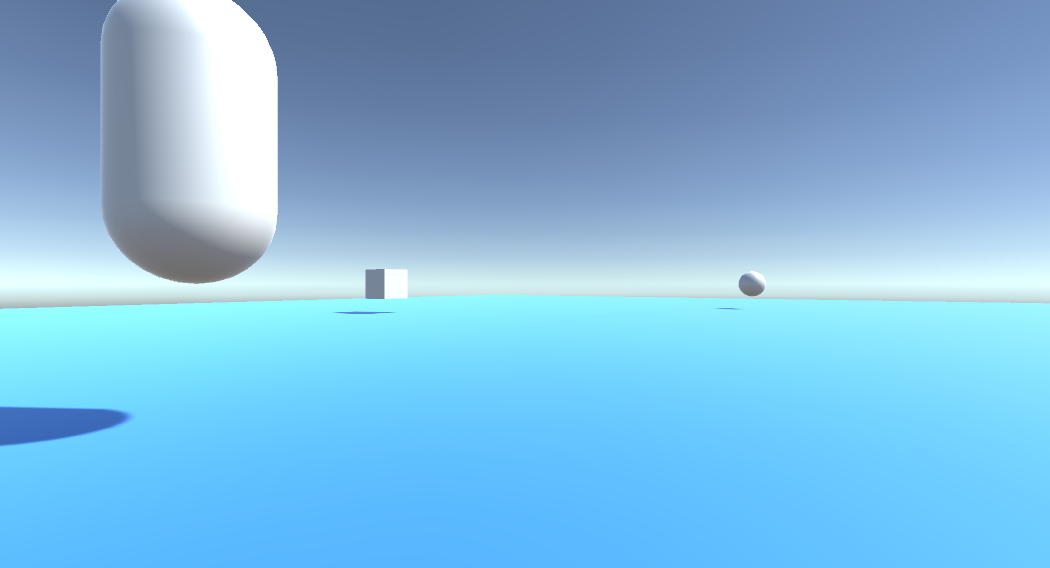
In this course, you'll learn how to add Application Insights capabilities to a mixed reality application, using the Azure Application Insights API to collect analytics regarding user behavior.
Application Insights is a Microsoft service, allowing developers to collect analytics from their applications and manage it from an easy-to-use portal. The analytics can be anything from performance to custom information you would like to collect. For more information, visit the Application Insights page.
Having completed this course, you'll have a mixed reality immersive headset application, which will be able to do the following:
- Allow the user to gaze and move around a scene.
- Trigger the sending of analytics to the Application Insights Service, by using Gaze and Proximity to in-scene objects.
- The app will also call upon the Service, fetching information about which object has been approached the most by the user, within the last 24 hours. That object will change its color to green.
This course will teach you how to get the results from the Application Insights Service, into a Unity-based sample application. It will be up to you to apply these concepts to a custom application you might be building.
Device support
| Course | HoloLens | Immersive headsets |
|---|---|---|
| MR and Azure 309: Application insights | ✔️ | ✔️ |
Note
While this course primarily focuses on Windows Mixed Reality immersive (VR) headsets, you can also apply what you learn in this course to Microsoft HoloLens. As you follow along with the course, you will see notes on any changes you might need to employ to support HoloLens. When using HoloLens, you may notice some echo during voice capture.
Prerequisites
Note
This tutorial is designed for developers who have basic experience with Unity and C#. Please also be aware that the prerequisites and written instructions within this document represent what has been tested and verified at the time of writing (July 2018). You are free to use the latest software, as listed within the install the tools article, though it should not be assumed that the information in this course will perfectly match what you will find in newer software than what is listed below.
We recommend the following hardware and software for this course:
- A development PC, compatible with Windows Mixed Reality for immersive (VR) headset development
- Windows 10 Fall Creators Update (or later) with Developer mode enabled
- The latest Windows 10 SDK
- Unity 2017.4
- Visual Studio 2017
- A Windows Mixed Reality immersive (VR) headset or Microsoft HoloLens with Developer mode enabled
- A set of headphones with a built-in microphone (if the headset doesn't have a built-in mic and speakers)
- Internet access for Azure setup and Application Insights data retrieval
Before you start
To avoid issues when building this project, it's strongly suggested that you create the project in this tutorial in a root or near-root folder (long folder paths can cause issues at build-time).
Warning
Be aware, data going to Application Insights takes time, so be patient. If you want to check if the Service has received your data, check out Chapter 14, which will show you how to navigate the portal.
Chapter 1 - The Azure Portal
To use Application Insights, you'll need to create and configure an Application Insights Service in the Azure portal.
Sign in to the Azure Portal.
Note
If you do not already have an Azure account, you will need to create one. If you are following this tutorial in a classroom or lab situation, ask your instructor or one of the proctors for help setting up your new account.
Once you're logged in, click New in the top left corner, and search for Application Insights, and click Enter.
Note
The word New may have been replaced with Create a resource, in newer portals.

The new page to the right will provide a description of the Azure Application Insights Service. At the bottom left of this page, select the Create button, to create an association with this Service.

Once you've clicked on Create:
Insert your desired Name for this Service instance.
As Application Type, select General.
Select an appropriate Subscription.
Choose a Resource Group or create a new one. A resource group provides a way to monitor, control access, provision and manage billing for a collection of Azure assets. It's recommended to keep all the Azure Services associated with a single project (for example, such as these courses) under a common resource group).
If you wish to read more about Azure Resource Groups, please visit the resource group article.
Select a Location.
You'll also need to confirm that you've understood the Terms and Conditions applied to this Service.
Select Create.

Once you've clicked on Create, you'll have to wait for the Service to be created, this might take a minute.
A notification will appear in the portal once the Service instance is created.

Select the notifications to explore your new Service instance.

Click the Go to resource button in the notification to explore your new Service instance. You'll be taken to your new Application Insights Service instance.

Note
Keep this web page open and easy to access, you will come back here often to see the data collected.
Important
To implement Application Insights, you will need to use three (3) specific values: Instrumentation Key, Application ID, and API Key. Below you will see how to retrieve these values from your Service. Make sure to note these values on a blank Notepad page, because you will use them soon in your code.
To find the Instrumentation Key, you'll need to scroll down the list of Service functions, and select Properties, the tab displayed will reveal the Service Key.
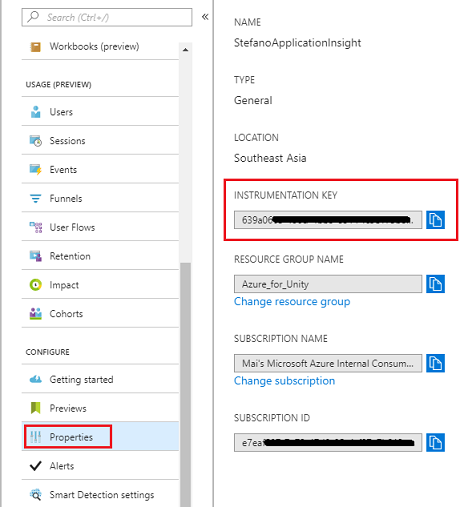
A little below Properties, you'll find API Access, which you need to click. The panel to the right will provide the Application ID of your app.

With the Application ID panel still open, click Create API Key, which will open the Create API key panel.

Within the now open Create API key panel, type a description, and tick the three boxes.
Click Generate Key. Your API Key will be created and displayed.

Warning
This is the only time your Service Key will be displayed, so ensure you make a copy of it now.
Chapter 2 - Set up the Unity project
The following is a typical setup for developing with the mixed reality, and as such, is a good template for other projects.
Open Unity and click New.
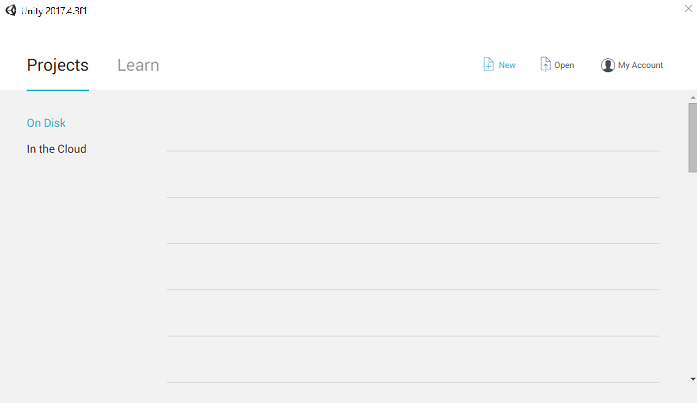
You'll now need to provide a Unity Project name, insert MR_Azure_Application_Insights. Make sure the Template is set to 3D. Set the Location to somewhere appropriate for you (remember, closer to root directories is better). Then, click Create project.

With Unity open, it's worth checking the default Script Editor is set to Visual Studio. Go to Edit > Preferences and then from the new window, navigate to External Tools. Change External Script Editor to Visual Studio 2017. Close the Preferences window.

Next, go to File > Build Settings and switch the platform to Universal Windows Platform, by clicking on the Switch Platform button.

Go to File > Build Settings and make sure that:
Target Device is set to Any device
For the Microsoft HoloLens, set Target Device to HoloLens.
Build Type is set to D3D
SDK is set to Latest installed
Build and Run is set to Local Machine
Save the scene and add it to the build.
Do this by selecting Add Open Scenes. A save window will appear.

Create a new folder for this, and any future scene, then click the New folder button, to create a new folder, name it Scenes.

Open your newly created Scenes folder, and then in the File name: text field, type ApplicationInsightsScene, then click Save.

The remaining settings, in Build Settings, should be left as default for now.
In the Build Settings window, select Player Settings, this will open the related panel in the space where the Inspector is located.

In this panel, a few settings need to be verified:
In the Other Settings tab:
Scripting Runtime Version should be Experimental (.NET 4.6 Equivalent), which will trigger a need to restart the Editor.
Scripting Backend should be .NET
API Compatibility Level should be .NET 4.6

Within the Publishing Settings tab, under Capabilities, check:
InternetClient

Further down the panel, in XR Settings (found below Publishing Settings), tick Virtual Reality Supported, make sure the Windows Mixed Reality SDK is added.

Back in Build Settings, Unity C# Projects is no longer greyed out; tick the checkbox next to this.
Close the Build Settings window.
Save your Scene and Project (FILE > SAVE SCENE / FILE > SAVE PROJECT).
Chapter 3 - Import the Unity package
Important
If you wish to skip the Unity Set up components of this course, and continue straight into code, feel free to download this Azure-MR-309.unitypackage, import it into your project as a Custom Package. This will also contain the DLLs from the next Chapter. After import, continue from Chapter 6.
Important
To use Application Insights within Unity, you need to import the DLL for it, along with the Newtonsoft DLL. There is currently a known issue in Unity which requires plugins to be reconfigured after import. These steps (4 - 7 in this section) will no longer be required after the bug has been resolved.
To import Application Insights into your own project, make sure you've downloaded the '.unitypackage', containing the plugins. Then, do the following:
Add the.unitypackage** to Unity by using the Assets > Import Package > Custom Package menu option.
In the Import Unity Package box that pops up, ensure everything under (and including) Plugins is selected.

Click the Import button, to add the items to your project.
Go to the Insights folder under Plugins in the Project view and select the following plugins only:
- Microsoft.ApplicationInsights

With this plugin selected, ensure that Any Platform is unchecked, then ensure that WSAPlayer is also unchecked, then click Apply. Doing this is just to confirm that the files are configured correctly.

Note
Marking the plugins like this, configures them to only be used in the Unity Editor. There are a different set of DLLs in the WSA folder which will be used after the project is exported from Unity.
Next, you need to open the WSA folder, within the Insights folder. You'll see a copy of the same file you configured. Select this file, and then in the inspector, ensure that Any Platform is unchecked, then ensure that only WSAPlayer is checked. Click Apply.

You'll now need to follow steps 4-6, but for the Newtonsoft plugins instead. See the below screenshot for what the outcome should look like.

Chapter 4 - Set up the camera and user controls
In this Chapter, you'll set up the camera and the controls to allow the user to see and move in the scene.
Right-click in an empty area in the Hierarchy Panel, then on Create > Empty.

Rename the new empty GameObject to Camera Parent.

Right-click in an empty area in the Hierarchy Panel, then on 3D Object, then on Sphere.
Rename the Sphere to Right Hand.
Set the Transform Scale of the Right Hand to 0.1, 0.1, 0.1

Remove the Sphere Collider component from the Right Hand by clicking on the Gear in the Sphere Collider component, and then Remove Component.

In the Hierarchy Panel, drag the Main Camera and the Right Hand objects onto the Camera Parent object.

Set the Transform Position of both the Main Camera and the Right Hand object to 0, 0, 0.


Chapter 5 - Set up the objects in the Unity scene
You'll now create some basic shapes for your scene, with which the user can interact.
Right-click in an empty area in the Hierarchy Panel, then on 3D Object, then select Plane.
Set the Plane Transform Position to 0, -1, 0.
Set the Plane Transform Scale to 5, 1, 5.

Create a basic material to use with your Plane object, so that the other shapes are easier to see. Navigate to your Project Panel, right-click, then Create, followed by Folder, to create a new folder. Name it Materials.
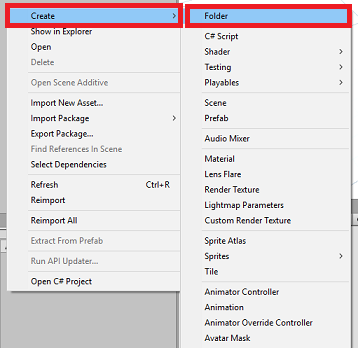

Open the Materials folder, then right-click, click Create, then Material, to create a new material. Name it Blue.
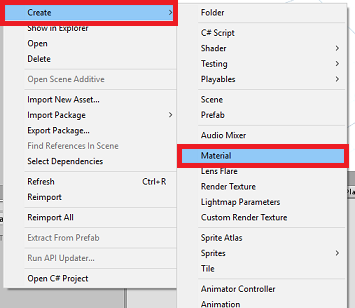

With the new Blue material selected, look at the Inspector, and click the rectangular window alongside Albedo. Select a blue color (the one picture below is Hex Color: #3592FFFF). Click the close button once you have chosen.

Drag your new material from the Materials folder, onto your newly created Plane, within your scene (or drop it on the Plane object within the Hierarchy).

Right-click in an empty area in the Hierarchy Panel, then on 3D Object, Capsule.
- With the Capsule selected, change its Transform Position to: -10, 1, 0.
Right-click in an empty area in the Hierarchy Panel, then on 3D Object, Cube.
- With the Cube selected, change its Transform Position to: 0, 0, 10.
Right-click in an empty area in the Hierarchy Panel, then on 3D Object, Sphere.
- With the Sphere selected, change its Transform Position to: 10, 0, 0.

Note
These Position values are suggestions. You are free to set the positions of the objects to whatever you would like, though it is easier for the user of the application if the objects distances are not too far from the camera.
When your application is running, it needs to be able to identify the objects within the scene, to achieve this, they need to be tagged. Select one of the objects, and in the Inspector panel, click Add Tag..., which will swap the Inspector with the Tags & Layers panel.
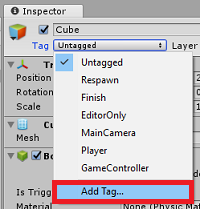

Click the + (plus) symbol, then type the tag name as ObjectInScene.

Warning
If you use a different name for your tag, you will need to ensure this change is also made the DataFromAnalytics, ObjectTrigger, and Gaze, scripts later, so that your objects are found, and detected, within your scene.
With the tag created, you now need to apply it to all three of your objects. From the Hierarchy, hold the Shift key, then click the Capsule, Cube, and Sphere, objects, then in the Inspector, click the dropdown menu alongside Tag, then click the ObjectInScene tag you created.
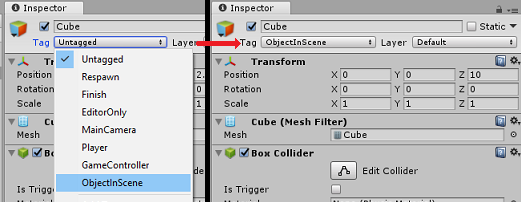

Chapter 6 - Create the ApplicationInsightsTracker class
The first script you need to create is ApplicationInsightsTracker, which is responsible for:
Creating events based on user interactions to submit to Azure Application Insights.
Creating appropriate Event names, depending on user interaction.
Submitting events to the Application Insights Service instance.
To create this class:
Right-click in the Project Panel, then Create > Folder. Name the folder Scripts.
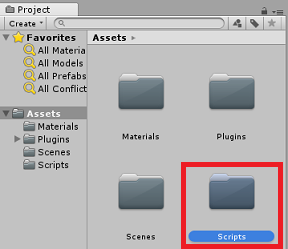

With the Scripts folder created, double-click it, to open. Then, within that folder, right-click, Create > C# Script. Name the script ApplicationInsightsTracker.
Double-click the new ApplicationInsightsTracker script to open it with Visual Studio.
Update namespaces at the top of the script to be as below:
using Microsoft.ApplicationInsights; using Microsoft.ApplicationInsights.DataContracts; using Microsoft.ApplicationInsights.Extensibility; using UnityEngine;Inside the class insert the following variables:
/// <summary> /// Allows this class to behavior like a singleton /// </summary> public static ApplicationInsightsTracker Instance; /// <summary> /// Insert your Instrumentation Key here /// </summary> internal string instrumentationKey = "Insert Instrumentation Key here"; /// <summary> /// Insert your Application Id here /// </summary> internal string applicationId = "Insert Application Id here"; /// <summary> /// Insert your API Key here /// </summary> internal string API_Key = "Insert API Key here"; /// <summary> /// Represent the Analytic Custom Event object /// </summary> private TelemetryClient telemetryClient; /// <summary> /// Represent the Analytic object able to host gaze duration /// </summary> private MetricTelemetry metric;Note
Set the instrumentationKey, applicationId and API_Key values appropriately, using the Service Keys from the Azure Portal as mentioned in Chapter 1, step 9 onwards.
Then add the Start() and Awake() methods, which will be called when the class initializes:
/// <summary> /// Sets this class instance as a singleton /// </summary> void Awake() { Instance = this; } /// <summary> /// Use this for initialization /// </summary> void Start() { // Instantiate telemetry and metric telemetryClient = new TelemetryClient(); metric = new MetricTelemetry(); // Assign the Instrumentation Key to the Event and Metric objects TelemetryConfiguration.Active.InstrumentationKey = instrumentationKey; telemetryClient.InstrumentationKey = instrumentationKey; }Add the methods responsible for sending the events and metrics registered by your application:
/// <summary> /// Submit the Event to Azure Analytics using the event trigger object /// </summary> public void RecordProximityEvent(string objectName) { telemetryClient.TrackEvent(CreateEventName(objectName)); } /// <summary> /// Uses the name of the object involved in the event to create /// and return an Event Name convention /// </summary> public string CreateEventName(string name) { string eventName = $"User near {name}"; return eventName; } /// <summary> /// Submit a Metric to Azure Analytics using the metric gazed object /// and the time count of the gaze /// </summary> public void RecordGazeMetrics(string objectName, int time) { // Output Console information about gaze. Debug.Log($"Finished gazing at {objectName}, which went for <b>{time}</b> second{(time != 1 ? "s" : "")}"); metric.Name = $"Gazed {objectName}"; metric.Value = time; telemetryClient.TrackMetric(metric); }Be sure to save your changes in Visual Studio before returning to Unity.
Chapter 7 - Create the Gaze script
The next script to create is the Gaze script. This script is responsible for creating a Raycast that will be projected forward from the Main Camera, to detect which object the user is looking at. In this case, the Raycast will need to identify if the user is looking at an object with the ObjectInScene tag, and then count how long the user gazes at that object.
Double-click the Scripts folder, to open it.
Right-click inside the Scripts folder, click Create > C# Script. Name the script Gaze.
Double-click the script to open it with Visual Studio.
Replace the existing code with the following:
using UnityEngine; public class Gaze : MonoBehaviour { /// <summary> /// Provides Singleton-like behavior to this class. /// </summary> public static Gaze Instance; /// <summary> /// Provides a reference to the object the user is currently looking at. /// </summary> public GameObject FocusedGameObject { get; private set; } /// <summary> /// Provides whether an object has been successfully hit by the raycast. /// </summary> public bool Hit { get; private set; } /// <summary> /// Provides a reference to compare whether the user is still looking at /// the same object (and has not looked away). /// </summary> private GameObject _oldFocusedObject = null; /// <summary> /// Max Ray Distance /// </summary> private float _gazeMaxDistance = 300; /// <summary> /// Max Ray Distance /// </summary> private float _gazeTimeCounter = 0; /// <summary> /// The cursor object will be created when the app is running, /// this will store its values. /// </summary> private GameObject _cursor; }Code for the Awake() and Start() methods now needs to be added.
private void Awake() { // Set this class to behave similar to singleton Instance = this; _cursor = CreateCursor(); } void Start() { FocusedGameObject = null; } /// <summary> /// Create a cursor object, to provide what the user /// is looking at. /// </summary> /// <returns></returns> private GameObject CreateCursor() { GameObject newCursor = GameObject.CreatePrimitive(PrimitiveType.Sphere); // Remove the collider, so it does not block raycast. Destroy(newCursor.GetComponent<SphereCollider>()); newCursor.transform.localScale = new Vector3(0.1f, 0.1f, 0.1f); newCursor.GetComponent<MeshRenderer>().material.color = Color.HSVToRGB(0.0223f, 0.7922f, 1.000f); newCursor.SetActive(false); return newCursor; }Inside the Gaze class, add the following code in the Update() method to project a Raycast and detect the target hit:
/// <summary> /// Called every frame /// </summary> void Update() { // Set the old focused gameobject. _oldFocusedObject = FocusedGameObject; RaycastHit hitInfo; // Initialize Raycasting. Hit = Physics.Raycast(Camera.main.transform.position, Camera.main.transform.forward, out hitInfo, _gazeMaxDistance); // Check whether raycast has hit. if (Hit == true) { // Check whether the hit has a collider. if (hitInfo.collider != null) { // Set the focused object with what the user just looked at. FocusedGameObject = hitInfo.collider.gameObject; // Lerp the cursor to the hit point, which helps to stabilize the gaze. _cursor.transform.position = Vector3.Lerp(_cursor.transform.position, hitInfo.point, 0.6f); _cursor.SetActive(true); } else { // Object looked on is not valid, set focused gameobject to null. FocusedGameObject = null; _cursor.SetActive(false); } } else { // No object looked upon, set focused gameobject to null. FocusedGameObject = null; _cursor.SetActive(false); } // Check whether the previous focused object is this same object. If so, reset the focused object. if (FocusedGameObject != _oldFocusedObject) { ResetFocusedObject(); } // If they are the same, but are null, reset the counter. else if (FocusedGameObject == null && _oldFocusedObject == null) { _gazeTimeCounter = 0; } // Count whilst the user continues looking at the same object. else { _gazeTimeCounter += Time.deltaTime; } }Add the ResetFocusedObject() method, to send data to Application Insights when the user has looked at an object.
/// <summary> /// Reset the old focused object, stop the gaze timer, and send data if it /// is greater than one. /// </summary> public void ResetFocusedObject() { // Ensure the old focused object is not null. if (_oldFocusedObject != null) { // Only looking for objects with the correct tag. if (_oldFocusedObject.CompareTag("ObjectInScene")) { // Turn the timer into an int, and ensure that more than zero time has passed. int gazeAsInt = (int)_gazeTimeCounter; if (gazeAsInt > 0) { //Record the object gazed and duration of gaze for Analytics ApplicationInsightsTracker.Instance.RecordGazeMetrics(_oldFocusedObject.name, gazeAsInt); } //Reset timer _gazeTimeCounter = 0; } } }You've now completed the Gaze script. Save your changes in Visual Studio before returning to Unity.
Chapter 8 - Create the ObjectTrigger class
The next script you need to create is ObjectTrigger, which is responsible for:
- Adding components needed for collision to the Main Camera.
- Detecting if the camera is near an object tagged as ObjectInScene.
To create the script:
Double-click the Scripts folder, to open it.
Right-click inside the Scripts folder, click Create > C# Script. Name the script ObjectTrigger.
Double-click the script to open it with Visual Studio. Replace the existing code with the following:
using UnityEngine; public class ObjectTrigger : MonoBehaviour { private void Start() { // Add the Collider and Rigidbody components, // and set their respective settings. This allows for collision. gameObject.AddComponent<SphereCollider>().radius = 1.5f; gameObject.AddComponent<Rigidbody>().useGravity = false; } /// <summary> /// Triggered when an object with a collider enters this objects trigger collider. /// </summary> /// <param name="collision">Collided object</param> private void OnCollisionEnter(Collision collision) { CompareTriggerEvent(collision, true); } /// <summary> /// Triggered when an object with a collider exits this objects trigger collider. /// </summary> /// <param name="collision">Collided object</param> private void OnCollisionExit(Collision collision) { CompareTriggerEvent(collision, false); } /// <summary> /// Method for providing debug message, and sending event information to InsightsTracker. /// </summary> /// <param name="other">Collided object</param> /// <param name="enter">Enter = true, Exit = False</param> private void CompareTriggerEvent(Collision other, bool enter) { if (other.collider.CompareTag("ObjectInScene")) { string message = $"User is{(enter == true ? " " : " no longer ")}near <b>{other.gameObject.name}</b>"; if (enter == true) { ApplicationInsightsTracker.Instance.RecordProximityEvent(other.gameObject.name); } Debug.Log(message); } } }Be sure to save your changes in Visual Studio before returning to Unity.
Chapter 9 - Create the DataFromAnalytics class
You'll now need to create the DataFromAnalytics script, which is responsible for:
- Fetching analytics data about which object has been approached by the camera the most.
- Using the Service Keys, that allow communication with your Azure Application Insights Service instance.
- Sorting the objects in scene, according to which has the highest event count.
- Changing the material color, of the most approached object, to green.
To create the script:
Double-click the Scripts folder, to open it.
Right-click inside the Scripts folder, click Create > C# Script. Name the script DataFromAnalytics.
Double-click the script to open it with Visual Studio.
Insert the following namespaces:
using Newtonsoft.Json; using System; using System.Collections; using System.Collections.Generic; using System.Linq; using UnityEngine; using UnityEngine.Networking;Inside the script, insert the following:
/// <summary> /// Number of most recent events to be queried /// </summary> private int _quantityOfEventsQueried = 10; /// <summary> /// The timespan with which to query. Needs to be in hours. /// </summary> private int _timepspanAsHours = 24; /// <summary> /// A list of the objects in the scene /// </summary> private List<GameObject> _listOfGameObjectsInScene; /// <summary> /// Number of queries which have returned, after being sent. /// </summary> private int _queriesReturned = 0; /// <summary> /// List of GameObjects, as the Key, with their event count, as the Value. /// </summary> private List<KeyValuePair<GameObject, int>> _pairedObjectsWithEventCount = new List<KeyValuePair<GameObject, int>>(); // Use this for initialization void Start() { // Find all objects in scene which have the ObjectInScene tag (as there may be other GameObjects in the scene which you do not want). _listOfGameObjectsInScene = GameObject.FindGameObjectsWithTag("ObjectInScene").ToList(); FetchAnalytics(); }Within the DataFromAnalytics class, right after the Start() method, add the following method called FetchAnalytics(). This method is responsible for populating the list of key value pairs, with a GameObject and a placeholder event count number. It then initializes the GetWebRequest() coroutine. The query structure of the call to Application Insights can be found within this method also, as the Query URL endpoint.
private void FetchAnalytics() { // Iterate through the objects in the list for (int i = 0; i < _listOfGameObjectsInScene.Count; i++) { // The current event number is not known, so set it to zero. int eventCount = 0; // Add new pair to list, as placeholder, until eventCount is known. _pairedObjectsWithEventCount.Add(new KeyValuePair<GameObject, int>(_listOfGameObjectsInScene[i], eventCount)); // Set the renderer of the object to the default color, white _listOfGameObjectsInScene[i].GetComponent<Renderer>().material.color = Color.white; // Create the appropriate object name using Insights structure string objectName = _listOfGameObjectsInScene[i].name; // Build the queryUrl for this object. string queryUrl = Uri.EscapeUriString(string.Format( "https://api.applicationinsights.io/v1/apps/{0}/events/$all?timespan=PT{1}H&$search={2}&$select=customMetric/name&$top={3}&$count=true", ApplicationInsightsTracker.Instance.applicationId, _timepspanAsHours, "Gazed " + objectName, _quantityOfEventsQueried)); // Send this object away within the WebRequest Coroutine, to determine it is event count. StartCoroutine("GetWebRequest", new KeyValuePair<string, int>(queryUrl, i)); } }Right below the FetchAnalytics() method, add a method called GetWebRequest(), which returns an IEnumerator. This method is responsible for requesting the number of times an event, corresponding with a specific GameObject, has been called within Application Insights. When all the sent queries have returned, the DetermineWinner() method is called.
/// <summary> /// Requests the data count for number of events, according to the /// input query URL. /// </summary> /// <param name="webQueryPair">Query URL and the list number count.</param> /// <returns></returns> private IEnumerator GetWebRequest(KeyValuePair<string, int> webQueryPair) { // Set the URL and count as their own variables (for readability). string url = webQueryPair.Key; int currentCount = webQueryPair.Value; using (UnityWebRequest unityWebRequest = UnityWebRequest.Get(url)) { DownloadHandlerBuffer handlerBuffer = new DownloadHandlerBuffer(); unityWebRequest.downloadHandler = handlerBuffer; unityWebRequest.SetRequestHeader("host", "api.applicationinsights.io"); unityWebRequest.SetRequestHeader("x-api-key", ApplicationInsightsTracker.Instance.API_Key); yield return unityWebRequest.SendWebRequest(); if (unityWebRequest.isNetworkError) { // Failure with web request. Debug.Log("<color=red>Error Sending:</color> " + unityWebRequest.error); } else { // This query has returned, so add to the current count. _queriesReturned++; // Initialize event count integer. int eventCount = 0; // Deserialize the response with the custom Analytics class. Analytics welcome = JsonConvert.DeserializeObject<Analytics>(unityWebRequest.downloadHandler.text); // Get and return the count for the Event if (int.TryParse(welcome.OdataCount, out eventCount) == false) { // Parsing failed. Can sometimes mean that the Query URL was incorrect. Debug.Log("<color=red>Failure to Parse Data Results. Check Query URL for issues.</color>"); } else { // Overwrite the current pair, with its actual values, now that the event count is known. _pairedObjectsWithEventCount[currentCount] = new KeyValuePair<GameObject, int>(_pairedObjectsWithEventCount[currentCount].Key, eventCount); } // If all queries (compared with the number which was sent away) have // returned, then run the determine winner method. if (_queriesReturned == _pairedObjectsWithEventCount.Count) { DetermineWinner(); } } } }The next method is DetermineWinner(), which sorts the list of GameObject and Int pairs, according to the highest event count. It then changes the material color of that GameObject to green (as feedback for it having the highest count). This displays a message with the analytics results.
/// <summary> /// Call to determine the keyValue pair, within the objects list, /// with the highest event count. /// </summary> private void DetermineWinner() { // Sort the values within the list of pairs. _pairedObjectsWithEventCount.Sort((x, y) => y.Value.CompareTo(x.Value)); // Change its colour to green _pairedObjectsWithEventCount.First().Key.GetComponent<Renderer>().material.color = Color.green; // Provide the winner, and other results, within the console window. string message = $"<b>Analytics Results:</b>\n " + $"<i>{_pairedObjectsWithEventCount.First().Key.name}</i> has the highest event count, " + $"with <i>{_pairedObjectsWithEventCount.First().Value.ToString()}</i>.\nFollowed by: "; for (int i = 1; i < _pairedObjectsWithEventCount.Count; i++) { message += $"{_pairedObjectsWithEventCount[i].Key.name}, " + $"with {_pairedObjectsWithEventCount[i].Value.ToString()} events.\n"; } Debug.Log(message); }Add the class structure which will be used to deserialize the JSON object, received from Application Insights. Add these classes at the very bottom of your DataFromAnalytics class file, outside of the class definition.
/// <summary> /// These classes represent the structure of the JSON response from Azure Insight /// </summary> [Serializable] public class Analytics { [JsonProperty("@odata.context")] public string OdataContext { get; set; } [JsonProperty("@odata.count")] public string OdataCount { get; set; } [JsonProperty("value")] public Value[] Value { get; set; } } [Serializable] public class Value { [JsonProperty("customMetric")] public CustomMetric CustomMetric { get; set; } } [Serializable] public class CustomMetric { [JsonProperty("name")] public string Name { get; set; } }Be sure to save your changes in Visual Studio before returning to Unity.
Chapter 10 - Create the Movement class
The Movement script is the next script you'll need to create. It's responsible for:
- Moving the Main Camera according to the direction the camera is looking towards.
- Adding all other scripts to scene objects.
To create the script:
Double-click the Scripts folder, to open it.
Right-click inside the Scripts folder, click Create > C# Script. Name the script Movement.
Double-click the script to open it with Visual Studio.
Replace the existing code with the following:
using UnityEngine; using UnityEngine.XR.WSA.Input; public class Movement : MonoBehaviour { /// <summary> /// The rendered object representing the right controller. /// </summary> public GameObject Controller; /// <summary> /// The movement speed of the user. /// </summary> public float UserSpeed; /// <summary> /// Provides whether source updates have been registered. /// </summary> private bool _isAttached = false; /// <summary> /// The chosen controller hand to use. /// </summary> private InteractionSourceHandedness _handness = InteractionSourceHandedness.Right; /// <summary> /// Used to calculate and proposes movement translation. /// </summary> private Vector3 _playerMovementTranslation; private void Start() { // You are now adding components dynamically // to ensure they are existing on the correct object // Add all camera related scripts to the camera. Camera.main.gameObject.AddComponent<Gaze>(); Camera.main.gameObject.AddComponent<ObjectTrigger>(); // Add all other scripts to this object. gameObject.AddComponent<ApplicationInsightsTracker>(); gameObject.AddComponent<DataFromAnalytics>(); } // Update is called once per frame void Update() { } }Within the Movement class, below the empty Update() method, insert the following methods that allow the user to use the hand controller to move in the virtual space:
/// <summary> /// Used for tracking the current position and rotation of the controller. /// </summary> private void UpdateControllerState() { #if UNITY_WSA && UNITY_2017_2_OR_NEWER // Check for current connected controllers, only if WSA. string message = string.Empty; if (InteractionManager.GetCurrentReading().Length > 0) { foreach (var sourceState in InteractionManager.GetCurrentReading()) { if (sourceState.source.kind == InteractionSourceKind.Controller && sourceState.source.handedness == _handness) { // If a controller source is found, which matches the selected handness, // check whether interaction source updated events have been registered. if (_isAttached == false) { // Register events, as not yet registered. message = "<color=green>Source Found: Registering Controller Source Events</color>"; _isAttached = true; InteractionManager.InteractionSourceUpdated += InteractionManager_InteractionSourceUpdated; } // Update the position and rotation information for the controller. Vector3 newPosition; if (sourceState.sourcePose.TryGetPosition(out newPosition, InteractionSourceNode.Pointer) && ValidPosition(newPosition)) { Controller.transform.localPosition = newPosition; } Quaternion newRotation; if (sourceState.sourcePose.TryGetRotation(out newRotation, InteractionSourceNode.Pointer) && ValidRotation(newRotation)) { Controller.transform.localRotation = newRotation; } } } } else { // Controller source not detected. message = "<color=blue>Trying to detect controller source</color>"; if (_isAttached == true) { // A source was previously connected, however, has been lost. Disconnected // all registered events. _isAttached = false; InteractionManager.InteractionSourceUpdated -= InteractionManager_InteractionSourceUpdated; message = "<color=red>Source Lost: Detaching Controller Source Events</color>"; } } if(message != string.Empty) { Debug.Log(message); } #endif }/// <summary> /// This registered event is triggered when a source state has been updated. /// </summary> /// <param name="obj"></param> private void InteractionManager_InteractionSourceUpdated(InteractionSourceUpdatedEventArgs obj) { if (obj.state.source.handedness == _handness) { if(obj.state.thumbstickPosition.magnitude > 0.2f) { float thumbstickY = obj.state.thumbstickPosition.y; // Vertical Input. if (thumbstickY > 0.3f || thumbstickY < -0.3f) { _playerMovementTranslation = Camera.main.transform.forward; _playerMovementTranslation.y = 0; transform.Translate(_playerMovementTranslation * UserSpeed * Time.deltaTime * thumbstickY, Space.World); } } } }/// <summary> /// Check that controller position is valid. /// </summary> /// <param name="inputVector3">The Vector3 to check</param> /// <returns>The position is valid</returns> private bool ValidPosition(Vector3 inputVector3) { return !float.IsNaN(inputVector3.x) && !float.IsNaN(inputVector3.y) && !float.IsNaN(inputVector3.z) && !float.IsInfinity(inputVector3.x) && !float.IsInfinity(inputVector3.y) && !float.IsInfinity(inputVector3.z); } /// <summary> /// Check that controller rotation is valid. /// </summary> /// <param name="inputQuaternion">The Quaternion to check</param> /// <returns>The rotation is valid</returns> private bool ValidRotation(Quaternion inputQuaternion) { return !float.IsNaN(inputQuaternion.x) && !float.IsNaN(inputQuaternion.y) && !float.IsNaN(inputQuaternion.z) && !float.IsNaN(inputQuaternion.w) && !float.IsInfinity(inputQuaternion.x) && !float.IsInfinity(inputQuaternion.y) && !float.IsInfinity(inputQuaternion.z) && !float.IsInfinity(inputQuaternion.w); }Lastly add the method call within the Update() method.
// Update is called once per frame void Update() { UpdateControllerState(); }Be sure to save your changes in Visual Studio before returning to Unity.
Chapter 11 - Setting up the scripts references
In this Chapter you need to place the Movement script onto the Camera Parent and set its reference targets. That script will then handle placing the other scripts where they need to be.
From the Scripts folder in the Project Panel, drag the Movement script to the Camera Parent object, located in the Hierarchy Panel.

Click the Camera Parent. In the Hierarchy Panel, drag the Right Hand object from the Hierarchy Panel to the reference target, Controller, in the Inspector Panel. Set the User Speed to 5, as shown in the image below.

Chapter 12 - Build the Unity project
Everything needed for the Unity section of this project has now been completed, so it's time to build it from Unity.
Navigate to Build Settings, (File > Build Settings).
From the Build Settings window, click Build.
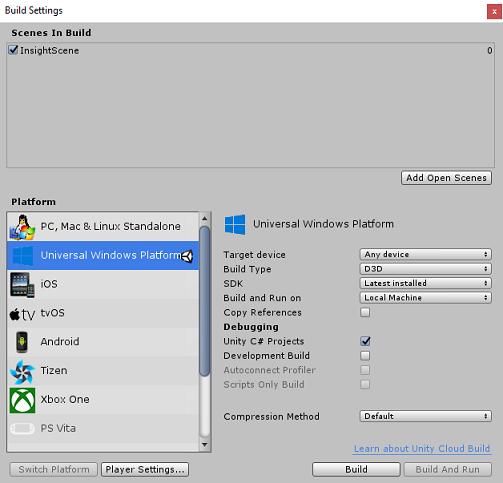
A File Explorer window will pop up, prompting you for a location for the build. Create a new folder (by clicking New Folder in the top-left corner), and name it BUILDS.

Open the new BUILDS folder, and create another folder (using New Folder once more), and name it MR_Azure_Application_Insights.

With the MR_Azure_Application_Insights folder selected, click Select Folder. The project will take a minute or so to build.
Following Build, File Explorer will appear showing you the location of your new project.
Chapter 13 - Deploy MR_Azure_Application_Insights app to your machine
To deploy the MR_Azure_Application_Insights app on your Local Machine:
Open the solution file of your MR_Azure_Application_Insights app in Visual Studio.
In the Solution Platform, select x86, Local Machine.
In the Solution Configuration select Debug.

Go to Build menu and click Deploy Solution to sideload the application to your machine.
Your app should now appear in the list of installed apps, ready to be launched.
Launch the mixed reality application.
Move around the scene, approaching objects and looking at them, when the Azure Insight Service has collected enough event data, it will set the object that has been approached the most to green.
Important
While the average waiting time for the Events and Metrics to be collected by the Service takes around 15 min, in some occasions it might take up to 1 hour.
Chapter 14 - The Application Insights Service portal
Once you have roamed around the scene and gazed at several objects, you can see the data collected in the Application Insights Service portal.
Go back to your Application Insights Service portal.
Select Metrics Explorer.

It will open in a tab containing the graph, which represent the Events and Metrics related to your application. As mentioned above, it might take some time (up to 1 hour) for the data to be displayed in the graph

Select the Events bar in the Total of Events by Application Version, to see a detailed breakdown of the events with their names.

Your finished your Application Insights Service application
Congratulations, you built a mixed reality app that leverages the Application Insights Service to monitor user's activity within your app.

Bonus Exercises
Exercise 1
Try spawning, rather than manually creating, the ObjectInScene objects and set their coordinates on the plane within your scripts. In this way, you could ask Azure what the most popular object was (either from gaze or proximity results) and spawn an extra one of those objects.
Exercise 2
Sort your Application Insights results by time, so that you get the most relevant data, and implement that time sensitive data in your application.